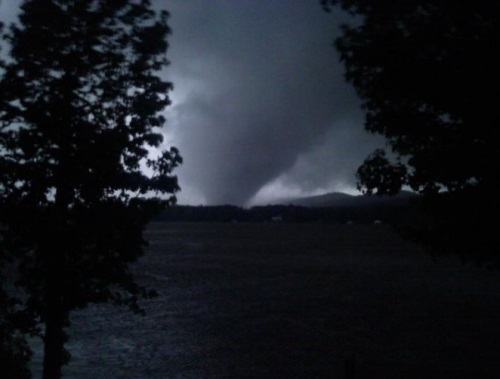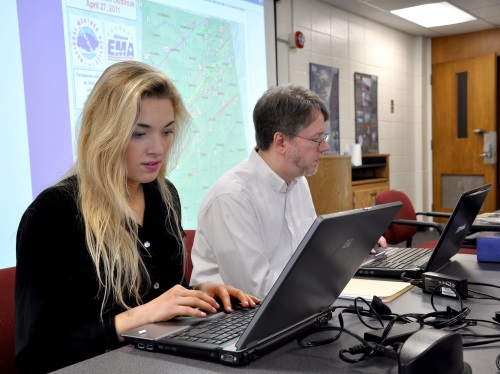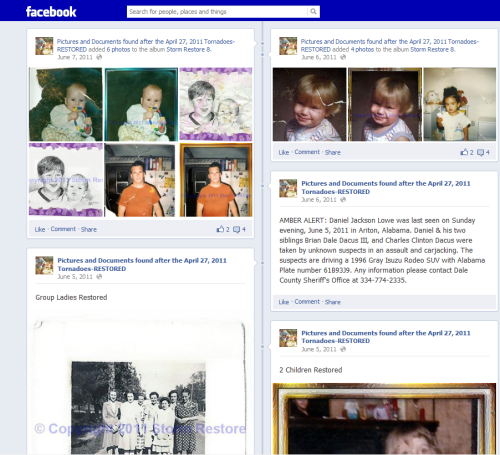How can a social media site like Facebook aid in the study of tornado debris and trajectories? Maybe you’re accustomed to witnessing the minute-to-minute daily log of your Facebook friends’ lives, but researchers at the University of Georgia (UGA) found a way to use countless images that users post to the site to analyze tornadoes.
On April 27, 2011, after tornadoes touched down in the Southeast, residents affected by the storm fled to Facebook to post images of the wreckage.

Photo taken from Shoal Creek Valley, Alabama. Captures the April 27, 2011 tornadoes. Photo taken from the Ohatchee side of Neely Henry Lake by a bystander.
John Knox, associate professor in the geography department and member of the atmospheric science program at the University of Georgia, along with a team of student researchers used the social media site to create and analyze a database of the debris and transformed photos and comments into a comprehensive study of debris trajectories from a tornado outbreak.
After the tornadoes hit, an Alabama resident assembled a Facebook page titled “Pictures and Documents found after the April 27, 2011 Tornadoes.” The UGA team used the images and information found on that page as a starting point and compiled a scientific database using geographic information system mapping software and high-resolution numerical trajectory modeling techniques to pinpoint the takeoff and landing points of 934 found-and-returned objects.

UGA professor John Knox and former undergraduate student Synne Brustad analyze tornado debris data their research group collected from Facebook.(Image via University of Georgia)
“Even 10 years ago, the items of debris left behind by a tornado outbreak — in our study, everything from metal signs to quilts and photographs — probably would have been thrown away, and that would have been the end of it,” said Knox.
Since Facebook is so widespread, many people affected were reunited with items they had lost from their homes. In some cases, family pictures travelled hundreds of miles. The UGA researchers were able to scientifically analyze the information gathered on the Facebook page. “Our study highlights the still mostly untapped potential of social media databases in scientific research,” said Knox.

This is the Facebook page put together for those affected by the tornadoes.
In the study, the team discovered that objects travelled nearly 220 miles, farther than any previous records for the longest documented trajectory of debris from a tornado. They found that the objects that travelled the longest distances were the ones that went up the highest where they encountered winds that blew the debris downwind and slightly to the right of the tornadoes’ path.
Take a look at some of the items discovered after the tornadoes visit the Facebook page: Pictures and Documents found after the April 27, 2011 Tornadoes
To view the team’s research, download the research paper below.
Advertisement





